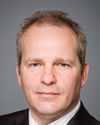With respect to research, we started to talk about IMTA, but not under that name--we talked about integrated aquaculture--in 1995. IMTA was created in 2004. I would call 1995 to 2000 a period of preaching in the desert. We had to convince people that it could be done, because they wondered if we could grow more than one species at a site. Was that possible? Then in 2000 we started to be funded, first by AquaNet, the Centres of Excellence Network in Aquaculture, then by the ACO Atlantic Innovation Fund. The breakthrough was proving to people that yes, you could grow more than one species at a site, if you did it right.
The second aspect was that there was still a regulation that did not allow IMTA to occur legally in Canada, because in the Canadian shellfish sanitation program there was a 125-metre distance. You were not allowed to grow organisms closer than 125 metres. It was a regulation not designed to be against IMTA, but we inherited it, and it was delaying things. I was always asking where this 125 metres came from. As a matter of fact, you were not allowed to grow anything closer than 125 metres from a wharf or a discharge operation, so it had nothing to do with IMTA. Then I said, again, that 125 is a magic number and that I am sure that it's 152.3 metres. People were saying to stop these things.
Then we spent, with the help of the Canadian Food Inspection Agency, eight or nine years accumulating data on the seaweeds we grow in the IMTA system and the mussels we grow in IMTA and whether they were okay for human consumption. We accumulated eight or nine years of data, and then the CFIA said that we could proceed with proper monitoring, because we had shown that these organisms were okay for food. That was, for me, a major breakthrough.
People always ask you in research whether you have any patents. For me, I say that changing the regulations--it took us several years--was one of the most important achievements.
Now, you talk about markets. We grow salmon, and the salmon from IMTA at the present time is sold by Loblaws as WiseSource salmon. That's one example of biomass that is differentiated because of IMTA. The mussels have a much higher meat yield than the typical mussel you get on the market. We get around 56%, compared to 50% to 55%. So there is an increased yield, and we have to differentiate that.
Generally, in the western world people understand fish or shellfish. But with seaweed, people say, “What do you do with seaweed?” You do three things. First, we are using it in three restaurants. It's not a huge volume, but for me, it's for the story, which is that yes, you can do delicious things with seaweed. Second, we work on cosmetics with a European company. Third, which I think is really important, is fishmeal substitution. We are working on putting more seaweed into new feed formulations for salmon. As a matter of fact, it would be a beautiful loop in IMTA production, because again, we would reduce the use of animal protein and fish protein. At the present time, those are the three uses.
We are also thinking of bio-gas and these things.





